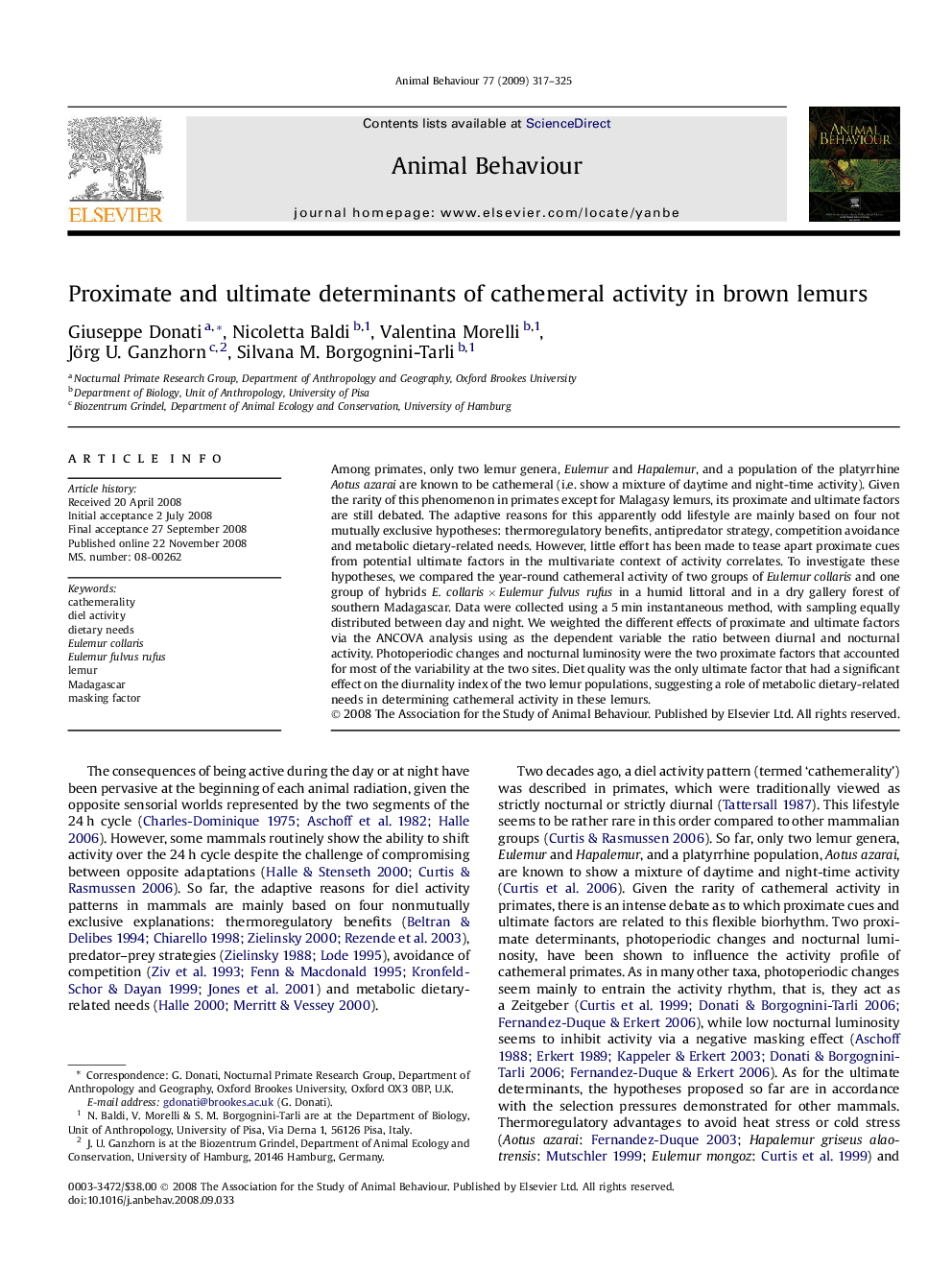| Article ID | Journal | Published Year | Pages | File Type |
|---|---|---|---|---|
| 2418152 | Animal Behaviour | 2009 | 9 Pages |
Among primates, only two lemur genera, Eulemur and Hapalemur, and a population of the platyrrhine Aotus azarai are known to be cathemeral (i.e. show a mixture of daytime and night-time activity). Given the rarity of this phenomenon in primates except for Malagasy lemurs, its proximate and ultimate factors are still debated. The adaptive reasons for this apparently odd lifestyle are mainly based on four not mutually exclusive hypotheses: thermoregulatory benefits, antipredator strategy, competition avoidance and metabolic dietary-related needs. However, little effort has been made to tease apart proximate cues from potential ultimate factors in the multivariate context of activity correlates. To investigate these hypotheses, we compared the year-round cathemeral activity of two groups of Eulemur collaris and one group of hybrids E. collaris × Eulemur fulvus rufus in a humid littoral and in a dry gallery forest of southern Madagascar. Data were collected using a 5 min instantaneous method, with sampling equally distributed between day and night. We weighted the different effects of proximate and ultimate factors via the ANCOVA analysis using as the dependent variable the ratio between diurnal and nocturnal activity. Photoperiodic changes and nocturnal luminosity were the two proximate factors that accounted for most of the variability at the two sites. Diet quality was the only ultimate factor that had a significant effect on the diurnality index of the two lemur populations, suggesting a role of metabolic dietary-related needs in determining cathemeral activity in these lemurs.
